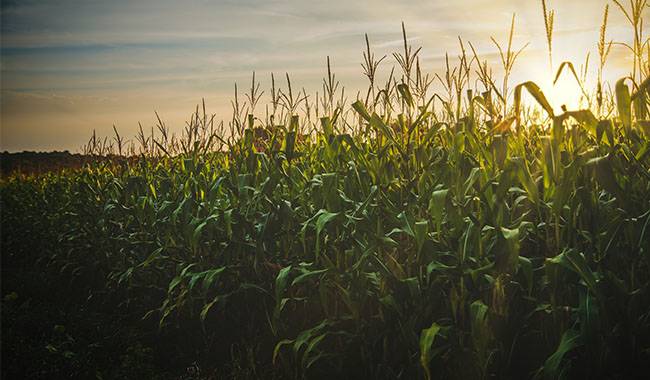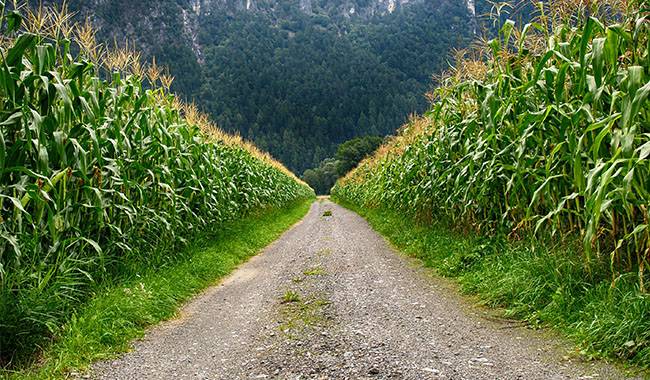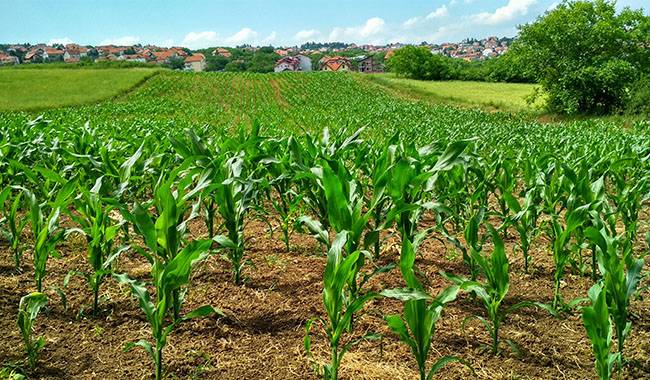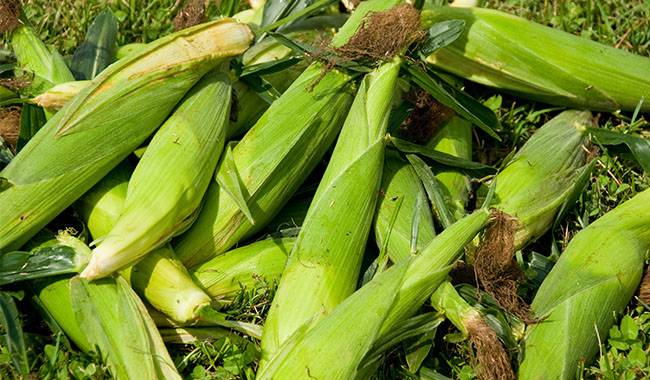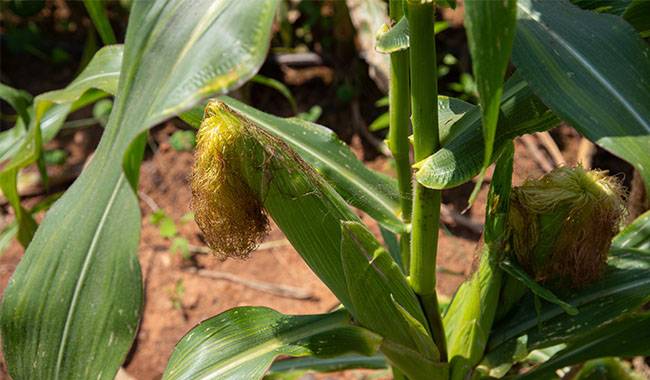
Maize is an “Indian wheat” whose earliest ancestor was (according to archaeological evidence) Mexico. Many researchers have attributed the origin of this crop to extraterrestrials, their evidence being the absence of a wild form ancestor and the impossibility of independent reproduction.
This reasoning overshadows the results of an American archaeologist who discovered the origin of the wild counterpart of the cultural form of corn. In an excavated layer dating back 7,000 years, “wild maize” proved to be a 10,000-year-old crop. Subsequent excavations of early archaeological strata also revealed that its cultivated form had been used for food. This article will provide tips on how to grow corn, growing, caring, and harvesting, and other tips for growing corn.
Native Americans brought corn to the Upper Mississippi River. The earliest corn plants were small, but through cultivation by Native Americans, pilgrims, and scientists, the corn plants have become the corn we know today. Native Americans found that corn grew well in Iowa soil and could be worked easily with bone hoes and wooden digging sticks. Modern Iowa farmers can produce 1 bushel of corn with only six minutes of manual labor. Native Americans spent about 20 hours of manual labor on each bushel.
Corn has been a staple crop in Iowa for more than 150 years. Lowa produces more corn than the entire country of Mexico. On average, Iowa grows 183 bushels of corn per acre. The national average is 173 bushels per acre (USDA). Over time, tractor technology has become more advanced, and planting and harvesting corn has become easier.
MAIZE IN PLANT SYSTEMS
In modern taxonomy, maize belongs to the cereal family (Poaceae). It is separated into a separate genus of maize (Zea). As an agricultural crop, it is represented by maize (Zea mays), subspecies (Zea mays subsp. Mays). In all countries where maize is grown in commercial quantities, the species is used as food, technology, and fodder. A separate species/subspecies/variety, maize for sugar (Zea saccharata), was later identified.
BRIEF BIOLOGICAL DESCRIPTION OF MAIZE
Maize is an annual plant with a well-developed taproot, which extends in the soil to 40-80inch (1-2m).
The stems are 60-80-120inch (1.5-2-3 m) long, erect, and nodding. Aerial roots form at the lower nodes and support the heavy above-ground portion of the crop. Unlike other grains, the inside of the stalk of corn is filled with flesh and has a sweet flavor.
Maize leaves are very large, sometimes up to 40inch (1 meter) long and 4-6inch (10-15 cm) wide, linear, sessile, and sheath-like.
Maize is a dioecious plant. The male inflorescence (panicle) is located at the top of the stem. Mature pollen is dispersed by the wind and reaches the stigma of the pistil. The female inflorescences are small spikelets that line the fleshy axis of the cob. The inflorescence of the female flowers is located in the middle part of the stem in the leaf axils. During flowering, the silky stigma drops a bundle of silky hairs that wither after pollination. Corn blooms in July. Flowering lasts from 2 to 3 weeks.
The fruit is a cereal. Unlike other grains, the fruit is round-square, large, and comes in various colors: yellow, red, black, almost white, with a slight yellowing and other shades.
THE MEDICINAL VALUE OF CORN
Corn kernels and female inflorescences contain a large amount of beneficial substances and vitamins that have medicinal effects when used as food or in the form of medicinal preparations.
The collected female corn flowers promote bile excretion, regulate the activity of the pancreas and liver, and promote the movement of the stomach and intestines. It has a positive effect on arteriosclerosis, polio, eczema, gout, muscular dystrophy, hypovitaminosis “E” and other diseases.
Medical facts. Native people in the “Corn Belt” countries have almost no cancer.
CHEMICAL COMPOSITION OF CORN
Corn seeds contain “B” group vitamins, niacin and pantothenic acid, starch, fatty oils, zeaxanthin, quercetin, and flavonoid derivatives. Corn oil contains large amounts of vitamin “E” (youth vitamin). It is used in nutrition. Its choleretic effect is close to that of egg yolk. Corn oil lowers cholesterol levels. It is used to prevent atherosclerosis.
It is particularly rich in the useful properties of corn stigmas. They contain bitterness, chlorophyll, glycosides, saponins, flavonoids, gums. Resins, vitamins of “B,” “K,” “E,” “D,” ascorbic acid, and other compounds. Preparations of Zea mays are used in official pharmacies in gynecology, Down’s disease, kidney disease, and other diseases.
GROWING CORN
Corn is an agricultural crop whose cultivation requires certain skills. Not all gardeners who plant the seeds will harvest sweet fruits. In order to obtain a “successful planting,” try all the care techniques required by the technology.
Corn varieties and hybrids
- The Ambrosia Hybrid variety takes 75 days to mature. It produces 8 inch long ears on 6 ½ foot tall plants.
- Blue Hopi matures in 100-110 days, and ‘Blue Hopi’ offers large ears up to 8-9 inches long with a sweet flavor. It can be eaten at harvest time or kept dry and used to make flour for tortillas
- Golden Bantam stems are only about 5 feet tall, and each ear is usually two 5 ½ to 6 ½ inches long, but for old-fashioned flavor, it’s unbeatable.
- Honey Select Hybrid produces 8- to 9-inch-long ears, and this variety is ready to harvest in 80 days and grows on stems up to 6 feet tall. It grows best in full sun in USDA cold hardiness zones 3-11. 5.
- Jubilee Hybrid This type is sweet and ready to harvest in 90 days. This variety grows on stems up to six feet tall. 6.
- Nirvana Hybrid takes 72 days to reach full maturity and does best in full sun conditions.
Peaches and Cream reach maturity in 80-83 days, with stems producing large 8-inch ears, and does best in full sun in zones 3-11. - Picasso Hybrid Best roasted, grilled, or boiled, this variety matures in 75 days and thrives in full sun. 9.
- Ruby Queen Hybrid This variety is ready to harvest in 75 days and has stems that grow to 7 feet tall. With ears up to 8 inches long and 18 rows of juicy, very soft kernels, this variety is ready for you to enjoy.
Silver Queen Hybrid varieties have large ears 8 to 9 inches long, 14 to 16 rows of white kernels, and stalks up to 8 feet tall, ready to harvest in 92 days. 11.
Named after its breeder, Stowells Evergreen has been developing this variety for decades and then sells 2 ears to a “friend” for just $4 for “personal use.” This “friend” then made a fortune with the seed, selling it for $20,000 and bringing it to market.
All varieties and hybrids are ready to eat fresh. They can also be easily canned. The market offers a range of varieties and hybrids developed in Europe and the United States. They have their own advantages. It depends on which one the grower prefers.
Choice of location and predecessor planting
The best location for corn is a sunny spot that is not shaded by tall trees. The best predecessors are peas, beans, winter crops, potatoes, buckwheat, zucchini, squash, sprouted tomatoes, and bell peppers.
Preparing the soil
Beds for planting corn, free of remnants of previous crops. If time permits before the onset of cold weather, provoke the sprouting of fall weeds by watering and kill them by shallow digging.
Apply a bucket of humus or compost and mineral fertilizer at a rate of 200 grams of calcium superphosphate and 80-100 grams of potash per 11 square feet each before entering winter. Dig in the soil up to the spade’s bayonet. In the spring, apply 50-60 grams of nitrocellulose per 11 square feet to the mature soil before planting. Reclaim the soil again for 4-6inch (10-15 cm) and start sowing when the weather is warm and stable.
Sowing corn
Sow corn in mid-May in the southern region. In medium areas, sow via sprouts in the last 5 days of May to mid-June. It is more reliable to start sowing when a constant warm air temperature is established, and the soil in the 4-6inch (10-15 cm) layer warms up to 53-59°F (12-15°C). If you sow seeds early, germination will be late, and the plants will be diseased.
Before sowing, you can soak the seeds in a 1% manganese solution for 5-10 minutes, wrap them in gauze, and place them in a warm place at 68-77°F (20-25°C) for curing.
Planting pattern of maize
Corn is a tall plant that can be used as a bush for low heat-loving crops or as a support for climbing crops. On farms, corn is most often planted in rows 12inch (30cm) apart and 20-23inch (50-60cm) apart. The hole should always be watered before planting. Seeds are sown after water absorption. Seeds sown into dry soil and piled up will not germinate. Place 2-3 seeds in a hole to a depth of 1-2inch (2.5-5 cm). Cover the top with soil.
After germination that occurs within 10-12 days, weak seedlings are removed. To set the crop, it is necessary to sow at least 4 rows or use the square nest method (35×35, 40×40, and others). This is due to pollination. Sowing corn in 1-2 rows can keep pollination poor. It is usually hand-pollinated by shaking the plant in dry weather and spraying the mature pollen of the male inflorescence.
Sowing corn in several rows, 10 to 15 days apart, will extend the harvest period by 2 to 4 weeks.
Planting young maize seedlings
In the central, especially in the northern regions, maize is planted by seedlings. In the middle zone, where the warm period is short, the germination method allows you to obtain stalks of technical (lactic) maturity in the field. In the north, corn seedlings are grown in greenhouses.
Seedlings are grown in individual containers, probably in peat pots of at least 200 g. The containers were filled with a mixture of peat, humus, or mature compost and sand (1:2:1). Add ash and nitrocellulose to the mixture. Seeds are buried to 1-2inch (2.5-5 cm) and covered with sand. Keep the soil in the pots moist. The room temperature is between 68-77°F (20-25°C) before germination and can be reduced to 62-68°F (17-20°C) after germination. Feed and water seedlings 8-10 days prior to planting them in a fixed location. Land 30-day-old seedlings in a permanent location by transferring them (in order not to damage the roots) or with a container (peat pot).
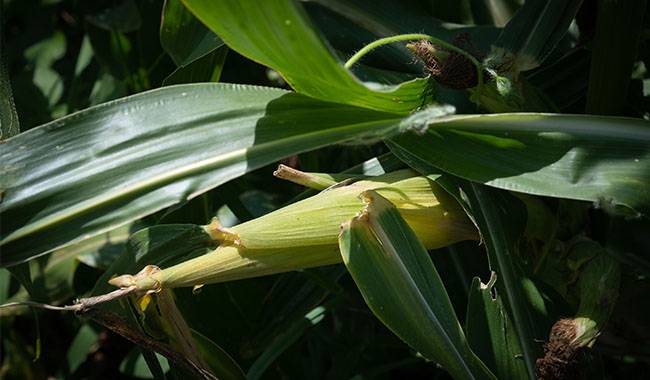
CARE OF CORN
The soil under the corn planting should be loose, free of weeds, and free of slabs. However, loosening of the soil should be carried out only until adventitious roots are formed. Once adventitious roots appear, hoeing should be done once or twice to cover the adventitious roots. The first loosening is combined with mulching after irrigation.
Weed the corn at the 2-3 leaf stage by removing weak shoots growing in the same nest. Leave 1 or 2 of the strongest, most fully developed shoots.
The stems appear on the corn when it starts to grow actively. They must also be destroyed because they take a lot of nutrients from the main plant. Incidentally, if the plants are sown very sparsely, side stems will appear.
They should be watered every 6-10 days or when the top 1-2inch (2.5-5 cm) of soil becomes dry. When watering, the water should reach the 0.4-5inch (1-13 cm) soil layer. Shallow watering will promote the formation of semi-hollow stalks.
Corn is very responsive to feeding. At least 3 feedings should be made during the growing season. The first one is at the 6 leaf stage with poultry manure or manure solution. The solid portion is diluted 11 and 8 times, respectively. The second is applied when corn begins to flower on a large scale or when it begins to earn a windfall. Application of nitroglycerin, which can be mixed with trace elements. Apply 40-60 grams of nitroglycerin per 11 square feet. Spread with 1-2 cups of ash. The final application is a nitro phosphate or phosphorus-potassium fertilizer at 40 and 30 grams per 11 square feet, respectively.
CARE OF CORN
The soil under the corn planting should be loose, free of weeds, and free of slabs. However, loosening should only be carried out until adventitious roots form. Once adventitious roots have appeared, one or two hoeing sessions should be carried out to cover the adventitious roots. The first loosening is combined with mulching after irrigation.
Weed the corn at the 2-3 leaf stage by removing weak shoots growing in the same nest. Leave 1 or 2 of the strongest, most fully developed shoots.
The stems appear on the corn when it starts to grow actively. They must also be destroyed because they take a lot of nutrients from the main plant. Incidentally, if the plants are sown very sparsely, side stems will appear.
They should be watered every 6-10 days, or when the top 1-2inch (2.5-5 cm) of soil becomes dry. When watering, the water should reach the 0.4-5inch (1-13 cm) soil layer. Shallow watering will promote the formation of semi-hollow stalks.
Corn is very responsive to feeding. At least 3 feedings should be made during the growing season. The first one is at the 6 leaf stage with poultry manure or manure solution. The solid portion is diluted 11 and 8 times, respectively. The second is applied when corn begins to flower on a large scale or when it begins to earn a windfall. Application of nitroglycerin, which can be mixed with trace elements. Apply 40-60 grams of nitroglycerin per 11 square feet. Spread with 1-2 cups of ash. The final application is with nitro phosphate or phosphorus-potassium fertilizer at 40 and 30 grams per 11 square feet, respectively.
CORN DISEASES AND INSECT PESTS
The most common insect pest of corn is dust mite, which is a bacterial disease. This fungal disease can affect not only the corn cob but also the plant organs (leaves and stems). To avoid infecting other plants, diseased plants should be removed immediately and burned. For prevention, treat the seeds before planting by mixing the biofungicide Trichodermin with water.
In case of nutrient deficiency (potassium starvation). The external manifestation of the disease is leaf heaving. It affects the rods – hollow, almost without kernels. It is necessary to fertilize with a solution of potassium fertilizer (30-40 g/bucket of water), 0.25-0.5 Gal (1-2 liters) per plant.
The most common pests are aphids, moths, corn moths, meadow moths, wireworms, spider beetles, etc. Chemicals should not be used when growing corn in rural areas because it is important to obtain environmentally friendly products. Therefore, after heavy germination, spray corn twice a month with a bio-insecticide solution as recommended for use. They are harmless to humans and animals. Soybeans planted next to corn will keep the crop free from tortoise beetles.
HARVESTING CORN
For fresh consumption, corn is harvested when the milk is ripe. You can bend the leaf wrapper backward and taste the density of the kernels on the cob, where the female stigma has withered. For canning, it is best to use milk-ripened kernels.
More related information about planting & growing corn




